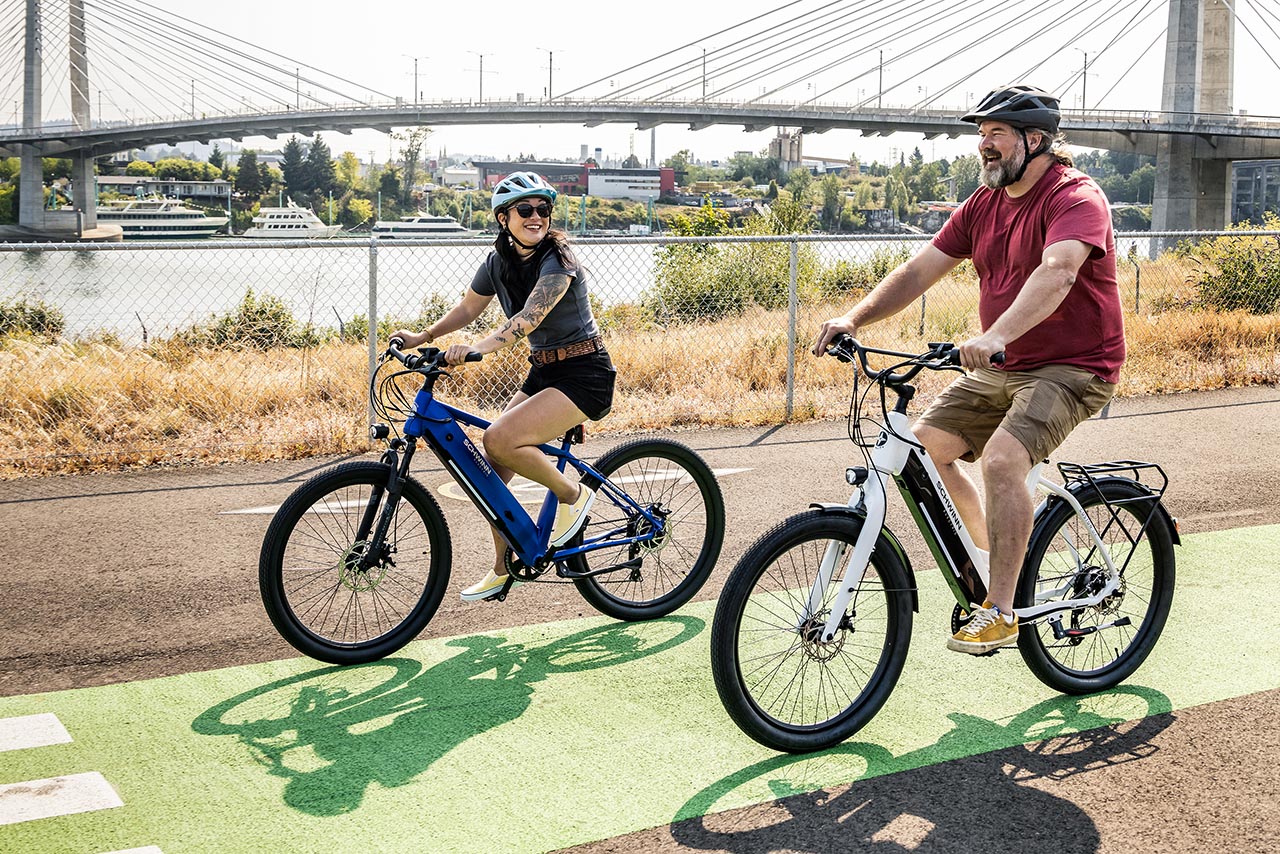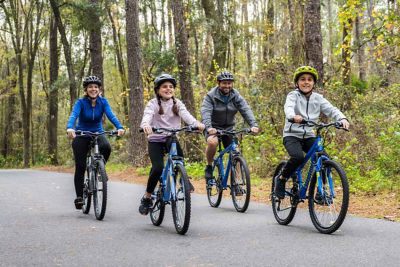Electric Bike Buying Guide
Discover the electric bike, or eBike, that fits your everyday life with the help of our buying guide.

There are many factors to consider when determining which electric bike, or eBike, is right for you, from the class of the electric bike to the type of riding you’ll primarily engage in. Electric bikes provide an entirely different experience than a regular bike and, often, a higher price tag, so we’ve put together this guide to help you make a well-informed purchasing decision.
Pedal-Assist vs. Throttle-Power
There are two types of riding technology that differentiate electric bikes: pedal-assist and throttle-power. Pedal-assist is what it sounds like: the technology will assist riders as they pedal and allow for more leisurely rides. Passengers can adjust the amount of assist according to their riding needs.
Throttle-power technology is a bit more advanced, as passengers are not required to pedal the bike at all. This makes it easy for coasting after a strenuous training session, for example. Throttle technology is especially useful for assisting riders with steeper or hilly terrain.
Types of Electric Bikes
Now, that you understand the difference in types of bikes, let’s break down the different eBike classes, which are determined by the bike’s maximum speed and electric power component:
- Class 1: Maximum speed of 20 MPH and uses pedal-assist technology
- Class 2: Maximum speed of 20 MPH and uses a combination of a throttle and pedal-assist technology
- Class 3: Maximum speed of 28 MPH and uses pedal-assist technology
Along with electric bike regulations in different states or areas, parks and public lands have their own unique sets of rules and regulations. Make sure you research the places you plan to ride before purchasing your new eBike. According to Schwinn, Class 2 is the most commonly accepted type of bike.
Where Are You Biking?
Will you be casually riding around town? To and from the suburbs? Off-roading on trails? Different bikes perform better in different circumstances. For example, pedal-assist bikes are better suited for long-distance riding where you can momentarily give yourself breaks from pedaling. Likewise, throttle-equipped bikes are more appropriate for something like city biking where you may need extra power to accelerate quickly.
How Much Power Do You Need?
Once you narrow down the type of riding you’ll be doing, you can decide how powerful of a motor you will need.
The power of the motor is measured in watts (W). The higher the wattage, the more powerful motor. The efficiency of the battery is measured in volts (V). Think of it like your car’s gas tank–just as a big truck with a powerful motor will need a big gas tank to power the vehicle, so will an electric bike with a powerful motor need a higher-voltage battery.
For the average rider, this is not the most practical or efficient choice. Use these battery voltage and motor wattage pairings as your guide when purchasing the right bike for your needs:
- Commuter-level bikes are typically equipped with a 250w motor and a 36v battery. This is enough to propel most people under 200 pounds up to 15 MPH on flat terrain.
- Recreational adventure bikes are typically equipped with a 500w motor and a 48v battery. That’s a lot of power! Think of it this way: that would be like a professional cyclist pedaling for you. It would be unnecessary to select an eBike with a 500w motor if you are only riding short distances on flat terrain. If you’re mountain biking, you may need that extra power to tackle hills, grass and unpaved trails.
- Utility bikes, like those used for making deliveries or transporting groceries, are typically equipped with anywhere from a 350w to 1000w motor and a 48v battery. The casual rider does not require a bike this powerful.
Battery life is dependent on how much you use the battery while riding.
Learn more here from our partners at Schwinn:
Ready to make the switch from a pedal bike to something with a bit more power? Gear up with all of your essentials by checking out our complete collection of bikes and cycling gear.
Biking in New York? Get the latest details on Lithium-Ion Battery Safety.





